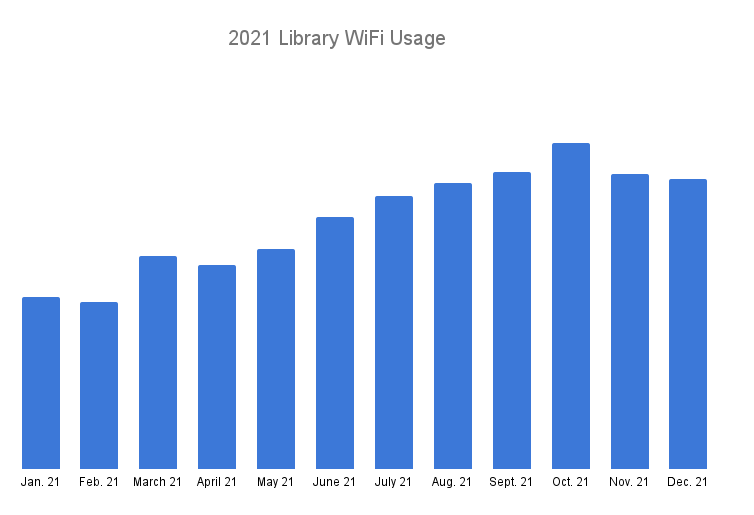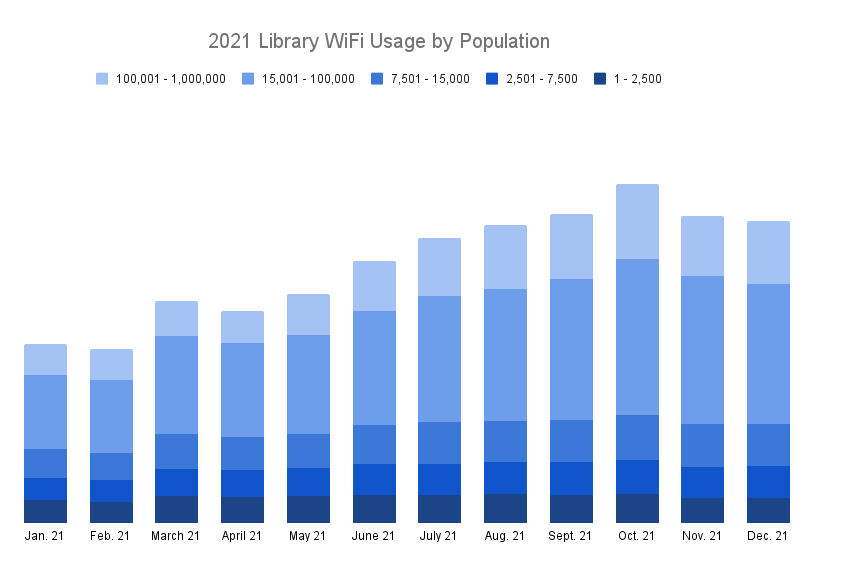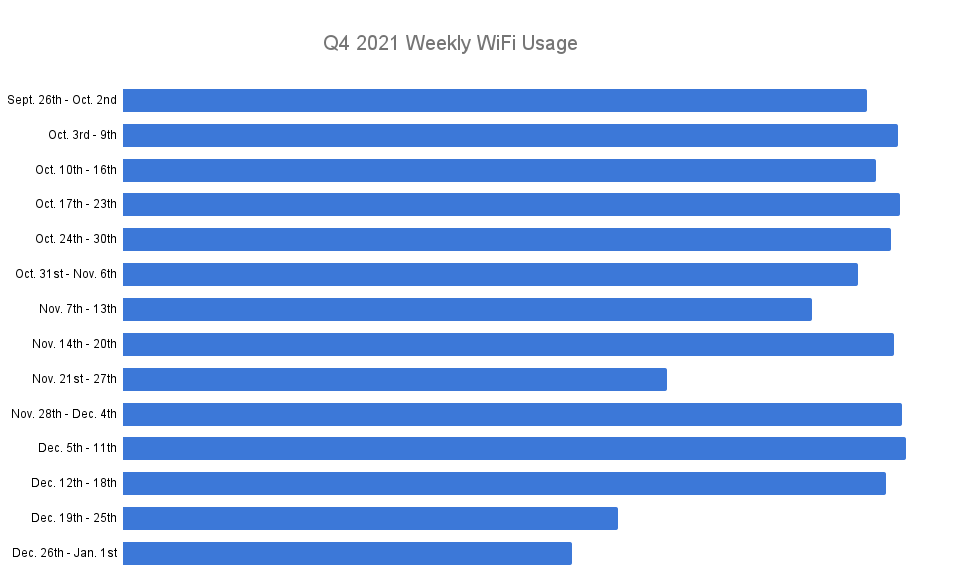2021 Annual Analysis of Public Library WiFi Usage
WhoFi analyzed data from our library partners to identify WiFi usage trends. This report includes our findings for 2021.
Public Library Insights for 2021
When analyzing WiFi insights data and looking for usage trends over the past year, we’ve identified clear fluctuations in use that seem to correlate with particular service areas, important timelines in the pandemic, and/or library outreach efforts. As we look at the data for 2021, there are some interesting changes to these numbers, along with a steady increase in WiFi usage across service areas.
The COVID-19 pandemic certainly brought about many changes in the way patrons interact with their libraries and how libraries serve their communities. These changes seem to be contributing to the WiFi usage trends, as many libraries have extended their WiFi services by leaving it on 24/7 and creating stronger signals for patrons who use WiFi in the parking lot.
With the pandemic continuing as libraries adjust to having both in-person and virtual programs, as well as opening the doors to patrons for sit-and-stay WiFi use, what does WiFi usage look like in 2021? In 2021, there continues to be a steady increase and at a much higher usage rate which means more patrons are using the WiFi this year. The graph below shows the total national WiFi usage for 2021.
Why are more people using the library’s WiFi now?
In our last report we noted that there was a new higher WiFi usage trend that appeared to start in March 2021 and continues to keep a steady pace of growth. This could be related to vaccinations being deployed, reopenings, and libraries continuing to enhance efforts to extend WiFi services. Historically, libraries have had higher WiFi usage in warmer weather, and this is true this year. Interestingly, October was the highest usage month, with a slight dip during the holiday season, as expected. One thing is clear and it’s that the community needs the public library’s WiFi and is showing up to use it and the services provided in the space.
How does WiFi usage by population size stack up?
In previous reports, our data showed that library WiFi use in both urban and rural service areas decreased, but urban areas had a much greater drop. And throughout the pandemic libraries in rural areas had a much faster return to pre-pandemic WiFi usage rates compared to libraries in urban areas.
The urban libraries have seen a much higher percentage increase in WiFi use for 2021 as a whole, compared to rural areas. This could be attributed to the fact that rural areas had already regained their usage rates and urban areas are now catching up. The graph below show the WiFi usage rates by population for the entire year.
Q4 weekly usage
Looking at the dip in November and December in WiFi usage, we decided to dig deeper to see what might be accounting for this. We usually find a dip in November and December of most years. Looking at the WiFi usage trends on a weekly basis provided insight into what’s happening. As you can clearly see from the weekly chart below, the holiday weeks of Thanksgiving, Christmas, and New Years correspond with significant decreases. This helps to explain the seasonality of the monthly decrease that happens in November and December.
What does this mean for these libraries and how can they best serve their community going forward?
The data is clear: WiFi is a valuable resource the libraries offer to help their communities. As libraries begin to prepare for the year ahead and planning for the future, tracking WiFi usage could prove beneficial for library advocacy efforts, operational improvements, strategic planning, and accurate reporting for the PLS survey. Having such information can give libraries the tools they need to secure funding to provide more and better services, and even help guide decisions on how to best use their space.
Carrying insights into the future.
This data solidifies the importance of public libraries within the communities they serve. Even before the coronavirus outbreak, lack of internet access was a big problem – now it’s critical. Throughout the pandemic, public libraries have continued to help patrons stay connected to school, work, and family. In addition, they continue to help provide social service assistance for their community members through filing for unemployment, Census registration, and job searches.
The knowledge we’ve gained from WiFi insights will continue to influence how libraries interact with the communities they serve.



